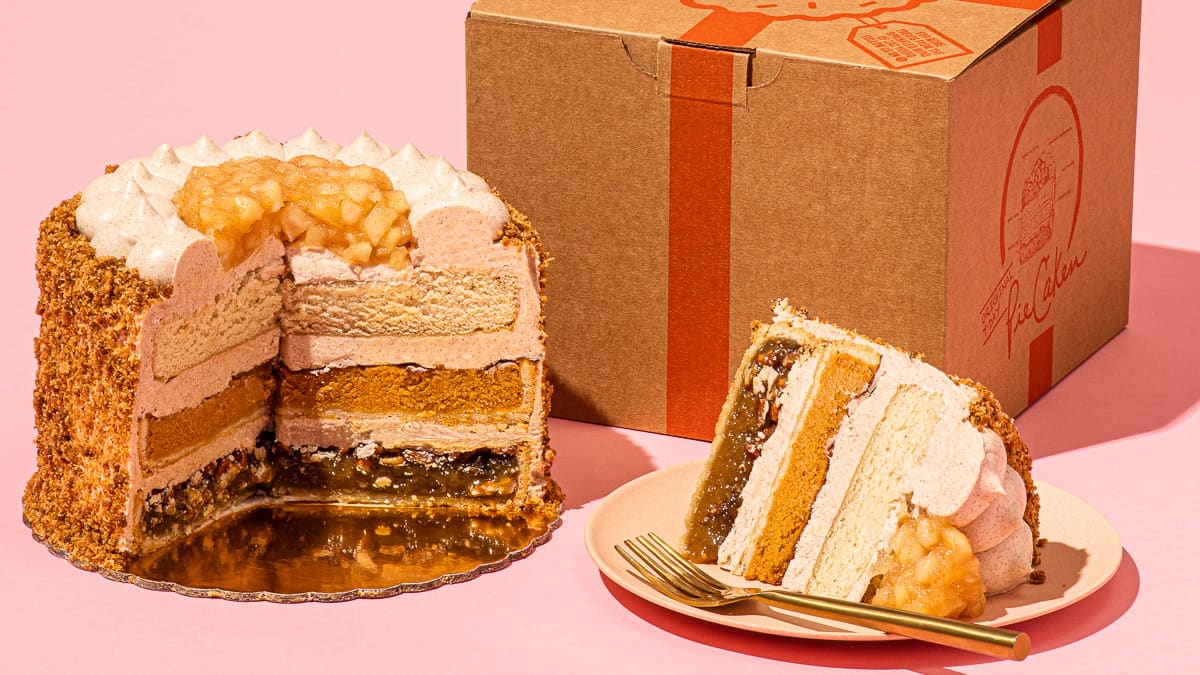This post was originally published on this site
Your Reese’s Peanut Butter Cup just got super-sized.
The Hershey
HSY,
Company, the candy and snack giant behind the Reese’s brand of cups and other treats, is rolling out a 3.4-pound version of the peanut butter-and-chocolate favorite to time with the Thanksgiving holiday. Indeed, the company is not referring to it as a “cup,” but rather a Reese’s Thanksgiving Pie — one that Hershey officials say is intended to be divvied into 48 servings with 160 calories per slice.
But if you prefer to go it alone, just be advised that the whole “pie,” with a diameter of nine inches, equates to 7,680 calories worth of dessert.
This cup comes with a catch, however: Hershey’s is making only 3,000 of them available and is selling the item exclusively online, starting Monday, for $44.99 plus tax.
Various factors played into the introduction of the super-sized peanut butter cup, Hershey officials say. But key among them is the fact that this Thanksgiving will be something of a return to the normal holiday celebration, given the problems posed by the pandemic in 2020. Which means Americans may be poised to have a good, gut-busting time.
“It feels like Thanksgiving is going to come back in a big way,” said Allen Dark, a senior brand manager for Reese’s.

Behold the PieCaken: Zac Young’s Thanksgiving-themed creation features layers of pecan and pumpkin pies and spice cake
Courtesy Two Twelve Management
That said, there’s been a trend in recent years to push the limit when it comes to Thanksgiving desserts. Perhaps the prime example is pastry chef Zac Young’s Thanksgiving-themed PieCaken — a multilayered pie-meets-cake dessert inspired by the turducken, a holiday statement of excess that, as it name implies, combines a turkey, duck and chicken.
Young’s dessert, which features layers of pecan and pumpkin pies and spice cake, with apple-pie filling and cinnamon-buttercream frosting, was introduced in 2015 and soon became a nationwide hit, available for shipping through the Goldbelly platform. Young won’t give exact figures, but says he sells his holiday PieCakens, which cost $99 apiece, in the tens of thousands, and expects 2021 to be his biggest Thanksgiving ever.
Young adds that he’s never wanted to know the calorie count of his over-the-top dessert. “Ignorance is bliss,” he said.

Gobble, gobble: Bridgewater Chocolate in Connecticut sells 4.5-pound chocolate turkeys that can be Thanksgiving centerpieces.
Bridgewater Chocolate
Boutique chocolatiers have also been getting in on the bigger-is-better Thanksgiving act. Li-Lac Chocolates, a New York-based company, has a chocolate turkey, weighing about 14 pounds, that it sells for $295. Bridgewater Chocolate, a Connecticut establishment, has a 4.5-pound version for $180.95. “It makes a great centerpiece for your Thanksgiving table,” Bridgewater says on its website.
For Hershey, however, the story behind the big peanut-butter cup goes beyond the Thanksgiving trend. It’s part of a larger push to take Reese’s, a $3 billion-a year brand, according to Hershey officials, and the most popular confection in America sales-wise, and make it even more ubiquitous.
Hershey has been adding all sorts of Reese’s items in recent years, including versions with pretzels and potato chips added to the peanut butter filling. It also has plus-size versions of the cups already available, though the biggest to date has been a one-pound package with two eight-ounce cups.
Given the demand for all things Reese’s, it might seem counterintuitive to make the new 3.4-pound cup available in such a relatively small quantity. Hershey officials note, however, that it’s no easy feat mass-producing such an item. They also say they want to gauge how much demand there truly is for such a super-sized cup.
“We’re able to see the reaction and then see if it’s something we want to scale in the future,” said Hershey spokeswoman Anna Lingeris.
Still, Hershey could be following a common business tactic, known as scarcity marketing, in creating buzz for an item (and for the company overall) by limiting availability. When done right, it can be a very effective tool, says Craig Agranoff, a Florida-based marketing professional.
“You trigger excitement,” he said.


